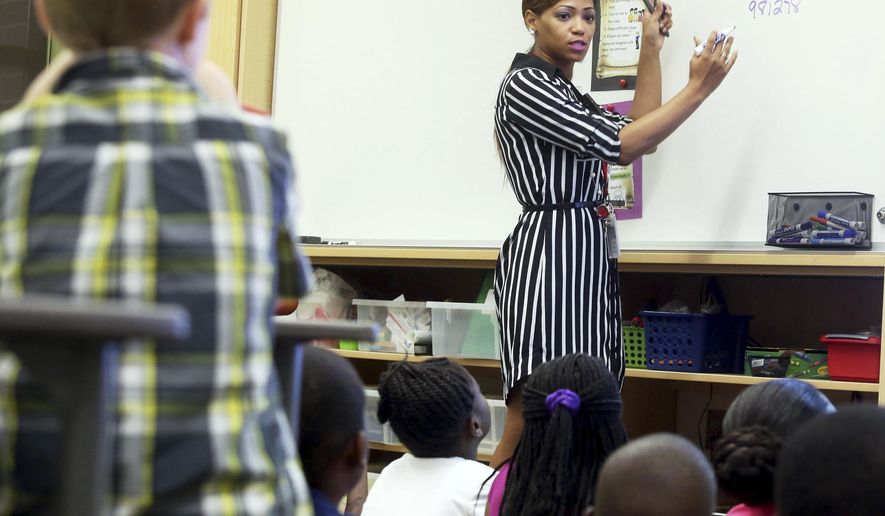CHARLESTON, S.C. (AP) - Graylon Nell wasn’t giving a lot of hints to her third-grade math class at Springfield Elementary. During a lesson on place values one recent Tuesday morning, she challenged students to suss out the meaning of the digit 1 in the number 1,389.
“That one costs one thousand,” said a boy sitting nearby on the floor.
“It costs 1,000, so I have to pay 1,000 to put that there?” Nell responded.
“No …”
“Can someone add on?” Nell said to the class.
For five minutes the students hashed it out. They spoke in turns, refining each other’s ideas and building a working definition of numerical place values. The conversation took longer than a traditional lecture might have, but, Nell hoped, the students would not soon forget a lesson they taught themselves.
Nell hasn’t always conducted her classroom this way. For the past two years, her school has been trying a new approach.
Using part of a multimillion-dollar grant for Title I schools in the area from the U.S. Department of Education’s Jacob K. Javits Gifted and Talented Students Education Program, Springfield has sent all of its teachers for training in gifted-and-talented education strategies developed at the College of William and Mary. They attended summer classes at the College of Charleston and will have opportunities for continuing education.
“When we first started the training, it was an eye-opener,” Nell said. “As teachers, we realize that we’re just facilitators of learning, so we’re not just up there giving lectures and giving all the answers to students and telling them that there’s only one way to find the answer to a question.”
Springfield is one of three schools in the Charleston County School District that’s trying out the Talent Development Academy model in partnership with C of C, along with Minnie Hughes Elementary and Angel Oak Elementary. All teachers at Springfield are now using gifted-and-talented curricula, like the Jacob’s Ladder Reading Comprehension Program and Mentoring Mathematical Minds, that were traditionally only used for the highest-performing students.
Teachers are also expected to serve as “talent scouts,” looking for students with hidden gifts. At a school where nearly three-quarters of students’ families living in some form of poverty, it’s partly a way to recruit underrepresented populations into the district’s gifted-and-talented program known as SAIL.
But it’s also a way of recognizing unique strengths in each child, according to Principal Blondell Adams.
“We are working to make certain that all of our students, no matter what level they come in to us, are exposed to the richness and rigor and high learning, so that we can bring out the best potential that they have,” Adams said.
Gifted-and-talented programs have traditionally underserved minority students, and Adams said the talent-scout program has been a boon at her school, which has a large population of students who recently arrived from abroad. Particularly when students are learning English as a second language, special talents might otherwise go unnoticed, Adams said.
“Who is to say the child from Chile or Pakistan is not gifted? Who is to say that?” Adams said.
In some ways, the teaching strategies are invisible to the students. They might not realize exactly what shift has taken place in the classroom. But for Richard Cruz, a SAIL student in the fifth grade, Springfield feels like home.
Richard transferred to Springfield from Jane Edwards Elementary on Edisto Island in the second grade. Now he works on word problems in SAIL. He tries his hand at engineering, building a shoe box vessel for the school’s 80-foot egg drop contest. And the feeling of belonging doesn’t end when he sets foot back in his regular classroom.
“They understand me,” he said.
___
Information from: The Post and Courier, https://www.postandcourier.com




Please read our comment policy before commenting.